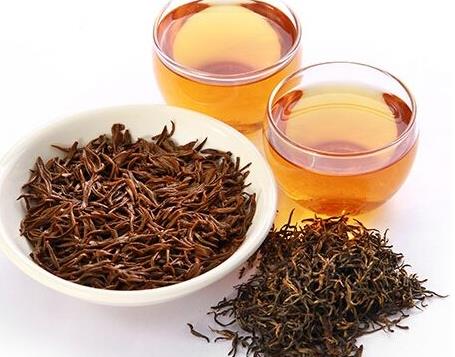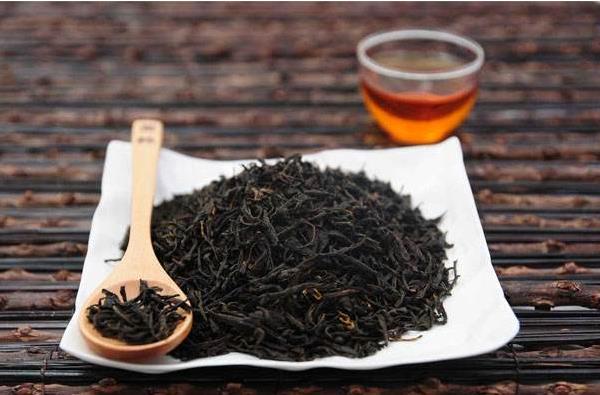Changes in aroma and taste of aged Huangzhixiang Dancong oolong tea and old gold Junmei black tea compared with aged black tea and oolong tea
Although it is still changing slowly, some teas are more stable than green teas in the first few years after production. Black tea is almost completely oxidized during processing, which means that it has little room for further oxidation. However, apart from the inevitable fading aroma that affects all tea leaves, some changes have taken place. The fresh black tea leaves appear bright and crisp, but with the passage of time, it becomes dim. The fresh taste of high-grade black tea is complex, rich, sweet and has a long aftertaste, while the taste of low-grade black tea is strong but not heavy. For both flavors, with the passage of time, the taste will become smoother and more mellow. In addition, black tea aged for 10 years or more is a very popular traditional Chinese medicine for treating cough. Jasmine tea also tends to maintain pleasant characteristics over a reliable period of time. Although jasmine tea is made from green tea base, jasmine tea is often more stable on the shelf than green tea because it is repeatedly dried and roasted during processing. To a large extent, this is because the traditional method of seasoning tea with fresh jasmine makes the tea absorb water, which must be removed by baking the tea. Even low-grade jasmine tea should be green, although the color is not as strong as ordinary green tea because it needs to be re-baked. Like other light teas, dry tea turns brown over time. Similarly, clean, fresh, floral yellow-green beer will become milder, brown or red over time. The pure and full-bodied aroma of jasmine fades, but it still exists for 3-5 years. The aroma will also become more complex, although the composition of the flowers will be reduced.

The bold characteristics of Chinese oolong tea make it mature in elegance. These teas include Wuyi rock tea (salt tea) and traditionally baked Fujian Anxi oolong tea, as well as Guangdong Dancong oolong tea. Like all oolong teas, the processing of these teas is to prevent the oxidation of the leaves, resulting in partial oxidation of the leaves. However, dark oolong tea has a higher degree of final oxidation due to the processing of fresh leaves and subsequent baking. Freshly made dark oolong tea has a bright brown "shiny" appearance. Over time, black teas like this lose their brightness and become dim, almost as if they were sprinkled with gray. However, their simple appearance masks the depth and complexity of the flavor. Fresh Wulong taste mellow, mellow, fresh, after aging, the taste is thicker, more complex, more mellow, fuller and sweeter. The floral and often heavily roasted aroma loses its smoky intensity and mild floral characteristics. Indeed, many Wulong drinkers find the strong baking properties of fresh Wulong somewhat unpopular and prefer to use time and patience to achieve softness. However, we should avoid making improperly made tea. Because Wuyi rock oolong is very loose and dry tea, they are particularly easy to absorb too much water from the air. Wulong meat is recooked every year to keep it humid. Among Wulong vendors, even a small version of the oven is popular, which manufacturers use to re-bake tobacco and tea after the rainy season at the end of summer. The light taste of white tea such as silver needle tea or white peony may look like green tea and other light teas. In fact, when fresh, its mild, smooth and sweet taste is closer to these than black tea. However, old high-quality white tea will become sweeter, smoother and more complex. The only price is the loss of floral and complex aromas. In addition, nutritional changes caused by oxidation lead to higher levels of flavonoid antioxidants in aged white tea. The evidence of oxidation is obvious, with furry white buds and the green inside of fresh leaves slowly turning brown. In China, drinking old white tea has been popular for a long time. Chinese herbal medicine believes that even if it is fresh, it also has the effect of reducing inflammation and cooling. It is thought that old white tea is even more effective than fresh white tea. Before aged white tea became popular in the market, traditional Chinese medicine practitioners in rural areas often bought unwanted aged white tea from tea manufacturers for medicinal use. However, as the price of aged white tea has soared in recent years, this remedy has been beyond their reach.
Important Notice :
前街咖啡 FrontStreet Coffee has moved to new addredd:
FrontStreet Coffee Address: 315,Donghua East Road,GuangZhou
Tel:020 38364473
- Prev

Do those who know tea usually buy old tea or old tea? Which is more advanced and more expensive than the old tea or the old tea?
Although a bit counterintuitive, aged tea is actually a recent phenomenon. Before the 21st century, fresh tea was always considered to be the best. However, while freshly made teas tend to have the strongest and brightest aromas, many types of teas develop fascinating new flavors and structures over time. Tea, it's boiling.
- Next

Tea lovers beginners must brew tea knowledge oolong tea, black tea should be brewed with the same water temperature?
Kungfu Tea-the craftsmanship and artistic skills of the perfect teacup can be translated as "skilled training". Using this method, we use special purple pottery pots and porcelain cups to soften the water, so as to achieve the best quality of tea. We pay close attention to the dosage of leaves, the water temperature and the soaking time of leaves. Kungfu Tea promoted tea drinking to one.
Related
- What ratio of water temperature and ground does the smart cup method use to press coffee? The difference between brewed coffee and filtered coffee?
- What is the standard process for the purpose of coffee cup testing? What is the difference between hand-brewed coffee and cup testing?
- How to use hand-brewed coffee paragon small golden balls? How does cold coffee lock in the aroma of coffee?
- Is American coffee black? What is the difference between American coffee and drip coffee?
- Unexpected! Well-known tea beverage brand Lele Tea will withdraw from the Zhengzhou market!
- Starbucks enters the fashion and beauty industry?! Netizen: Give me an ice American eye cream
- Why can American refills for free? The difference between Americano and American drip pot coffee
- Being chased out of the rain in front of Starbucks?! Store: Sheltering from rain under umbrellas poses a safety hazard
- The white moonlight has changed?! Lucky launches "Big Winter Pear American"
- Hand-brewed coffee three-stage method, high-sweet and universal brewing method to share! What does the high sweet water level of hand-brewed coffee mean?

